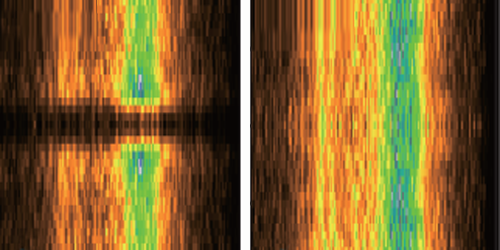Bismuthates Are Surprisingly Conventional
Certain bismuth oxides, called bismuthates, were among the first compounds found to exhibit high-temperature superconductivity. The mechanisms behind their superconductivity has, however, remained mysterious, although researchers suspected they were related to those of so-called unconventional superconductors like cuprates and iron pnictides. Now Donglai Feng at Fudan University in China and colleagues might have solved the 30-year-old bismuthate puzzle with data from new photoemission experiments. Their measurements suggest that bismuthates are not unconventional superconductors but are instead conventional Bardeen-Cooper-Schrieffer superconductors, in which superconductivity arises from the strong coupling between electrons and phonons.
The go-to technique to study superconductors is angle-resolved photoemission spectroscopy (ARPES), which provides a direct measurement of a material’s electronic structure by mapping the momenta of electrons the material emits when illuminated by UV or x-ray light. However, ARPES measurements of bismuthates were previously unfeasible, as crystals with large, clean, flat surfaces—a requirement for experiments—weren’t available. Feng’s team solved this problem by improving the synthesis process for bismuthate crystals. They also deployed an ARPES technique that uses a small-spot-size light beam, allowing them to probe crystal domains as small as 50 .
The team’s results indicate a stronger-than-expected electron-phonon coupling in bismuthates. By comparing the measured electronic bands with density-functional-theory calculations, the authors explain that the strong coupling is due to long-range Coulomb interactions between electrons in the material—an effect that previous theoretical work had underestimated. The authors argue that accounting for such long-range interactions could help theorists predict other conventional superconductors with high critical temperatures.
This research is published in Physical Review Letters.
–Matteo Rini
Matteo Rini is the Deputy Editor of Physics.





